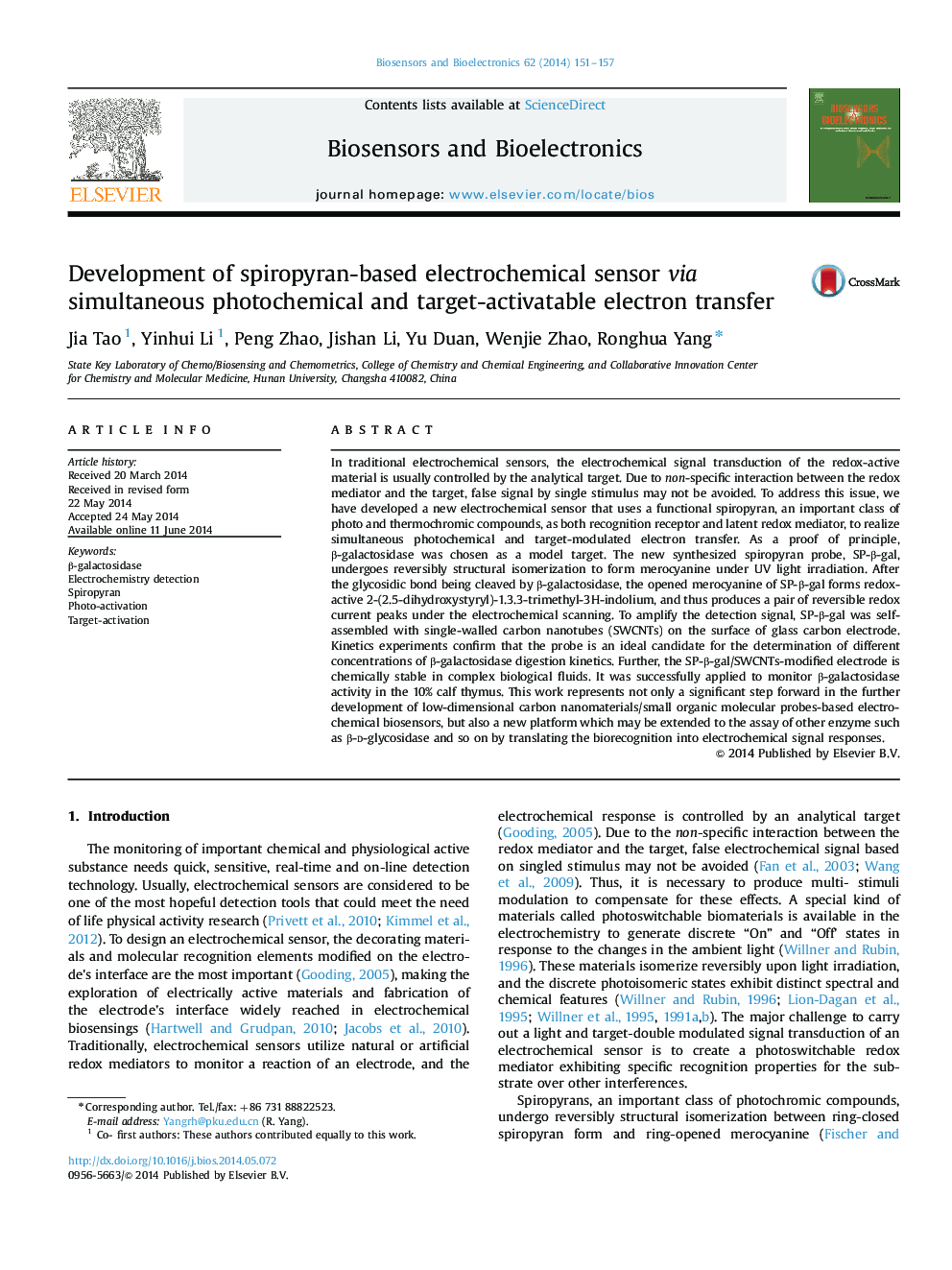| Article ID | Journal | Published Year | Pages | File Type |
|---|---|---|---|---|
| 7233001 | Biosensors and Bioelectronics | 2014 | 7 Pages |
Abstract
In traditional electrochemical sensors, the electrochemical signal transduction of the redox-active material is usually controlled by the analytical target. Due to non-specific interaction between the redox mediator and the target, false signal by single stimulus may not be avoided. To address this issue, we have developed a new electrochemical sensor that uses a functional spiropyran, an important class of photo and thermochromic compounds, as both recognition receptor and latent redox mediator, to realize simultaneous photochemical and target-modulated electron transfer. As a proof of principle, β-galactosidase was chosen as a model target. The new synthesized spiropyran probe, SP-β-gal, undergoes reversibly structural isomerization to form merocyanine under UV light irradiation. After the glycosidic bond being cleaved by β-galactosidase, the opened merocyanine of SP-β-gal forms redox-active 2-(2.5-dihydroxystyryl)-1.3.3-trimethyl-3H-indolium, and thus produces a pair of reversible redox current peaks under the electrochemical scanning. To amplify the detection signal, SP-β-gal was self-assembled with single-walled carbon nanotubes (SWCNTs) on the surface of glass carbon electrode. Kinetics experiments confirm that the probe is an ideal candidate for the determination of different concentrations of β-galactosidase digestion kinetics. Further, the SP-β-gal/SWCNTs-modified electrode is chemically stable in complex biological fluids. It was successfully applied to monitor β-galactosidase activity in the 10% calf thymus. This work represents not only a significant step forward in the further development of low-dimensional carbon nanomaterials/small organic molecular probes-based electrochemical biosensors, but also a new platform which may be extended to the assay of other enzyme such as β-d-glycosidase and so on by translating the biorecognition into electrochemical signal responses.
Related Topics
Physical Sciences and Engineering
Chemistry
Analytical Chemistry
Authors
Jia Tao, Yinhui Li, Peng Zhao, Jishan Li, Yu Duan, Wenjie Zhao, Ronghua Yang,
